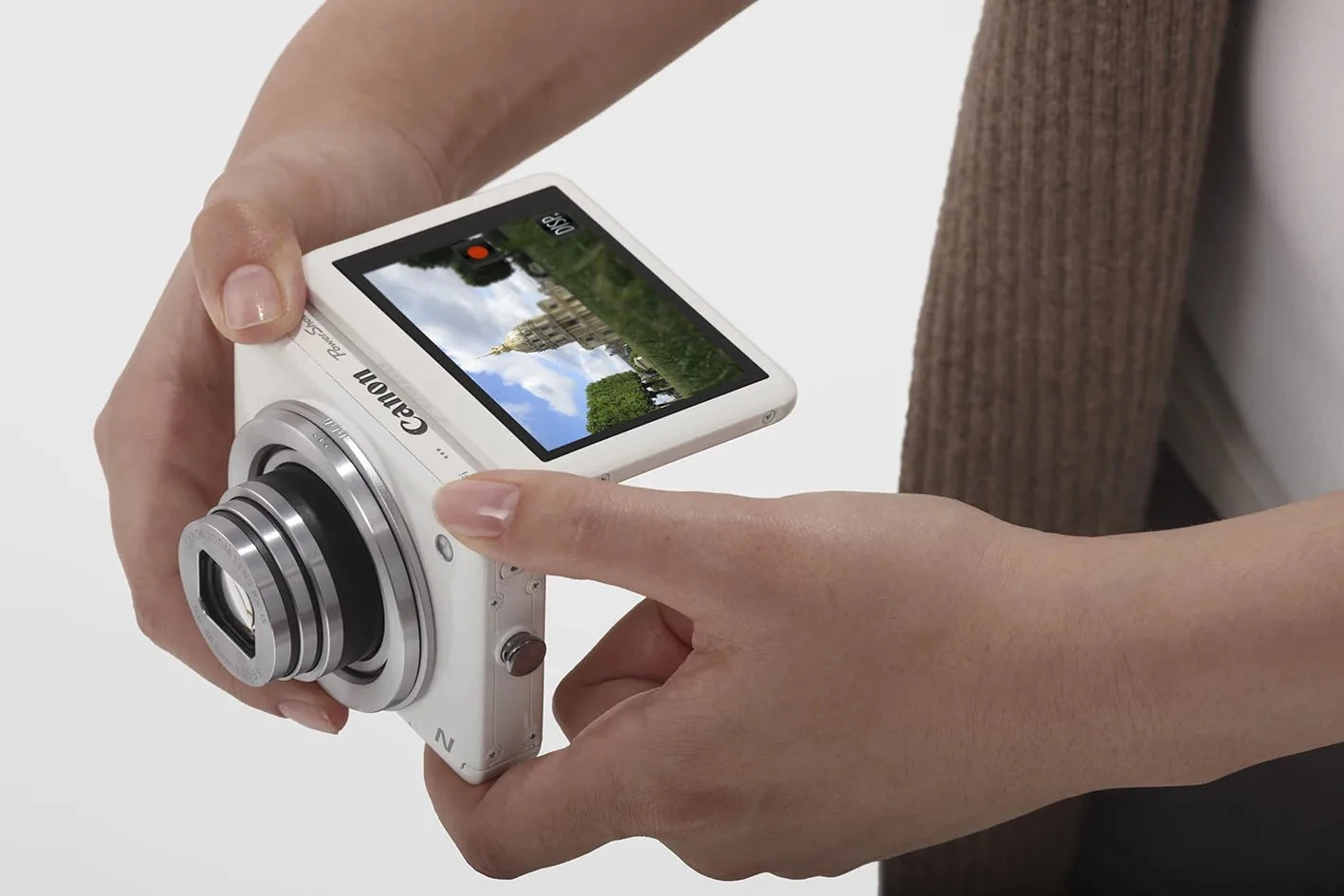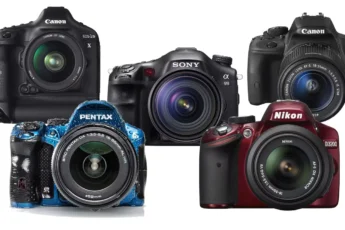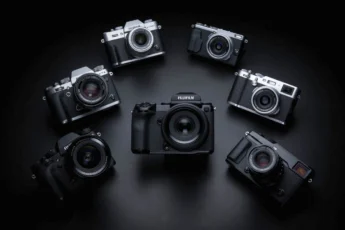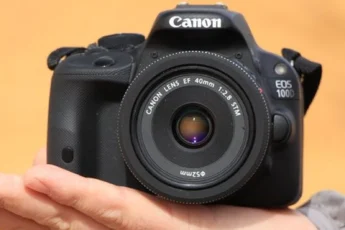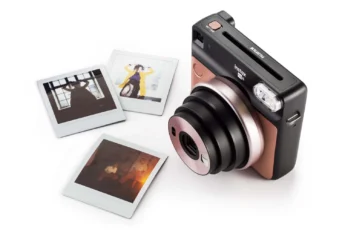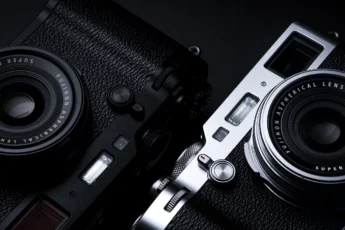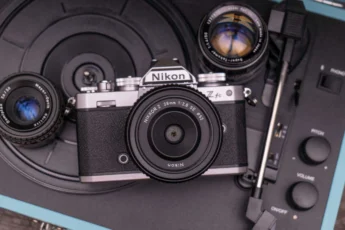The introduction of flip-screen cameras has revolutionized the way photographers and videographers capture their subjects. These versatile devices have become increasingly popular among content creators, vloggers, and photography enthusiasts who value the convenience and flexibility they offer. In this comprehensive guide, we’ll explore the fascinating world of cameras with flip screens, delving into their history, benefits, and the top brands and models available in the market.
The concept of flip-screen cameras can be traced back to the early 2000s when digital cameras began incorporating swiveling LCD screens. These early models, such as the Canon PowerShot G1 and the Nikon Coolpix 950, paved the way for the development of more advanced flip-screen technology. Over the years, manufacturers have refined the design and functionality of these screens, making them an indispensable feature for many photographers and videographers.
- Overview of Cameras with Flip Screens
- Benefits of Cameras with Flip Screens
- Improved Self-Portraits and Vlogging
- Enhanced Framing and Composition
- Factors to Consider When Choosing a Camera with Flip Screen
- Types of Flip Screens
- Resolution and Display Quality
- Touchscreen Functionality
- Compatibility with Accessories
- Top Brands and Models of Cameras with Flip Screens
- Sony Alpha Series
- Sony Alpha ZV-E10
- Sony Alpha 7S III
- Canon EOS M50 Mark II
- Nikon Zfc
- Using Cameras with Flip Screens Effectively
- Flipping the Screen for Different Shooting Angles
- Utilizing Touchscreen Controls
- Customizing Settings for Convenience
- Best Practices for Maintaining Cameras with Flip Screens
- Cleaning and Protecting the Screen
- Avoiding Damages to the Flip Mechanism
- Comparing Cameras with Flip Screens to Traditional Cameras
- Advantages of Flip Screen Cameras
- Limitations of Flip Screen Cameras
- Conclusion
Overview of Cameras with Flip Screens
Cameras with flip screens are characterized by their unique form factor, which allows the LCD screen to be rotated and tilted away from the camera body. This innovative design enables users to capture shots from various angles and perspectives that would otherwise be challenging or impossible with traditional cameras.
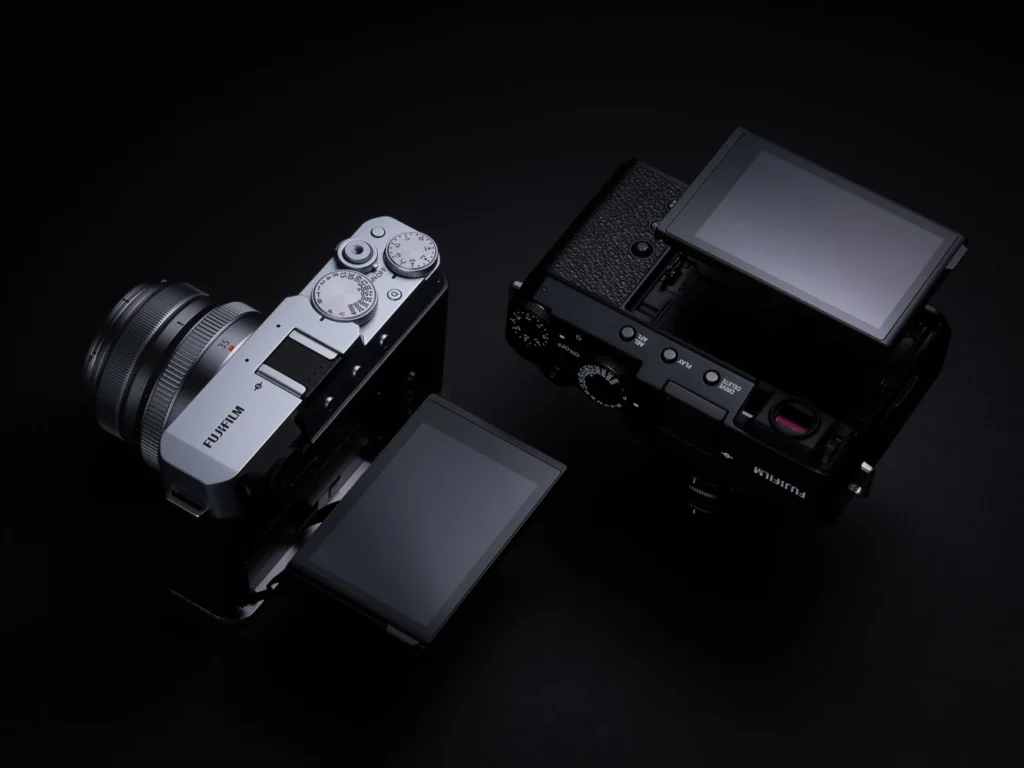
Imagine being able to frame a shot perfectly, even when holding the camera high above your head or low to the ground. With a flip-screen camera, you can easily compose your shots and ensure that your subject is in focus, regardless of the shooting angle. This versatility has made flip-screen cameras particularly popular among vloggers, who often need to film themselves while on the move or in challenging lighting conditions.
Benefits of Cameras with Flip Screens
Improved Self-Portraits and Vlogging
One of the primary advantages of cameras with flip screens is their ability to facilitate self-portraits and vlogging. By flipping the screen around to face the front of the camera, users can easily frame themselves in the shot and ensure that they are in focus. This eliminates the need for guesswork or the assistance of a secondary monitor, making solo content creation a breeze.
Professional vlogger Peter McKinnon shares his experience with flip-screen cameras: “Having a flip screen on my camera has been a game-changer for my vlogging setup. I can now frame my shots perfectly, even when I’m filming myself, and I don’t have to worry about being out of focus or not centered in the frame.”
Enhanced Framing and Composition
Flip screens also offer enhanced framing and composition capabilities, allowing photographers to capture unique perspectives and angles. By tilting the screen, users can easily compose shots from high or low angles without having to contort their bodies or strain their necks. This is particularly useful when shooting in crowded spaces or tight quarters, where maneuverability may be limited.
Moreover, flip screens enable photographers to capture creative compositions that would be difficult to achieve with a traditional viewfinder. For example, by flipping the screen upwards, users can capture stunning low-angle shots that emphasize the foreground elements or create a sense of depth in the image.
Factors to Consider When Choosing a Camera with Flip Screen
Types of Flip Screens
When shopping for a camera with a flip screen, it’s essential to consider the type of screen available. Some cameras feature fully articulating screens that can rotate 180 degrees and flip out to the side, while others have tilting screens that can only move up and down. Fully articulating screens offer greater flexibility and are ideal for self-portraits and vlogging, while tilting screens are more suitable for high and low-angle shots.
Resolution and Display Quality
Another critical factor to consider is the resolution and quality of the flip screen. Look for cameras with high-resolution screens that offer sharp and clear images, even in bright sunlight. Some cameras also feature touchscreen functionality, which can be handy for navigating menus and selecting focus points.
Touchscreen Functionality
Touchscreen functionality is another essential feature to consider when choosing a camera with a flip screen. Many modern cameras offer responsive touchscreens that allow users to navigate menus, adjust settings, and even focus on specific areas of the frame with a simple tap. This can be particularly useful when shooting in live view mode or when using the flip screen for self-portraits or vlogging.
Compatibility with Accessories
Lastly, consider the camera’s compatibility with accessories such as external microphones, video lights, and tripods. If you plan to use your camera for vlogging or video production, ensure that it has a microphone input jack and a hot shoe formounting external accessories. Compatibility with your existing lenses and other equipment is also crucial, especially if you’re investing in a camera system.
Top Brands and Models of Cameras with Flip Screens
Sony Alpha Series
Sony Alpha ZV-E10
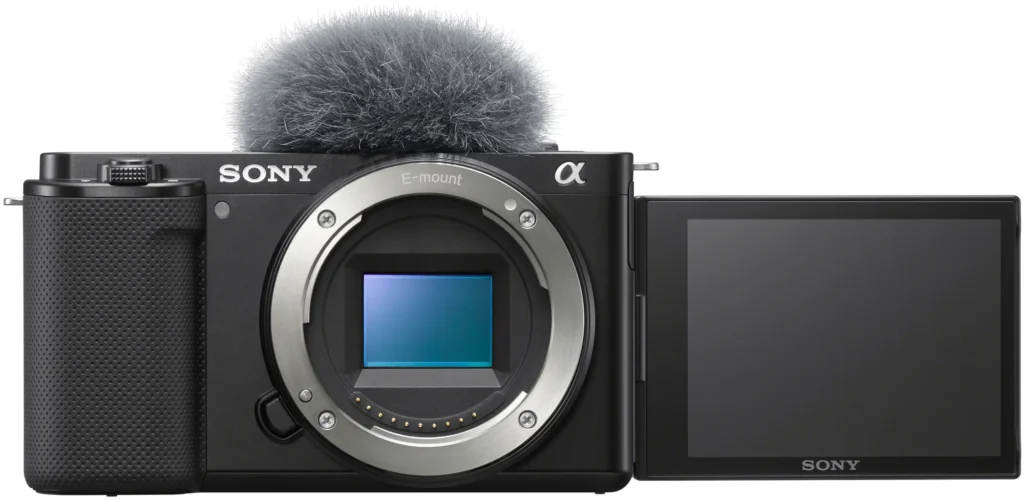
The Sony Alpha ZV-E10 is a popular choice among vloggers and content creators, thanks to its compact design and impressive video capabilities. This mirrorless camera features a 24.2MP APS-C sensor, 4K video recording, and a fully articulating flip screen that makes it easy to frame shots from any angle. The ZV-E10 also boasts a variety of vlogger-friendly features, such as a dedicated background defocus button and a product showcase setting that automatically shifts focus to objects held up to the camera.
Sony Alpha 7S III
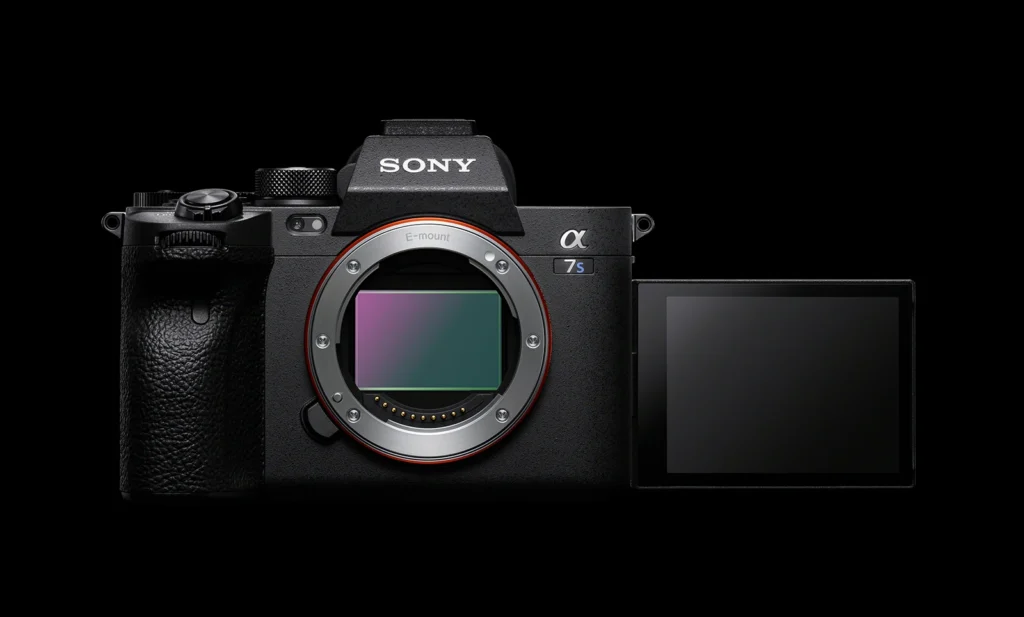
For professional videographers and filmmakers, the Sony Alpha 7S III is a top-of-the-line camera that offers exceptional low-light performance and advanced video features. This full-frame mirrorless camera boasts a 12.1MP sensor optimized for video, 4K recording at up to 120fps, and a fully articulating flip screen that’s perfect for shooting from creative angles. The Alpha 7S III also features a host of professional-grade video tools, including S-Log3 and S-Gamut3 profiles, 10-bit 4:2:2 internal recording, and a full-size HDMI output.
Canon EOS M50 Mark II
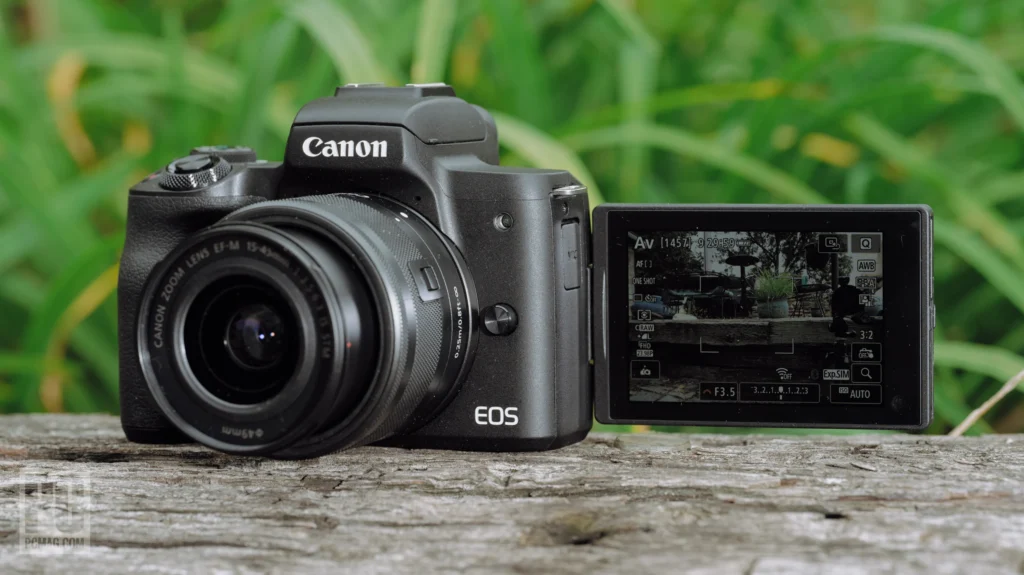
The Canon EOS M50 Mark II is a versatile mirrorless camera that’s well-suited for both photography and video. It features a 24.1MP APS-C sensor, 4K video recording, and a fully articulating flip screen that makes it easy to compose shots from various angles. The M50 Mark II also offers a user-friendly interface, with a range of automatic and manual shooting modes that cater to both beginners and advanced users.
Nikon Zfc
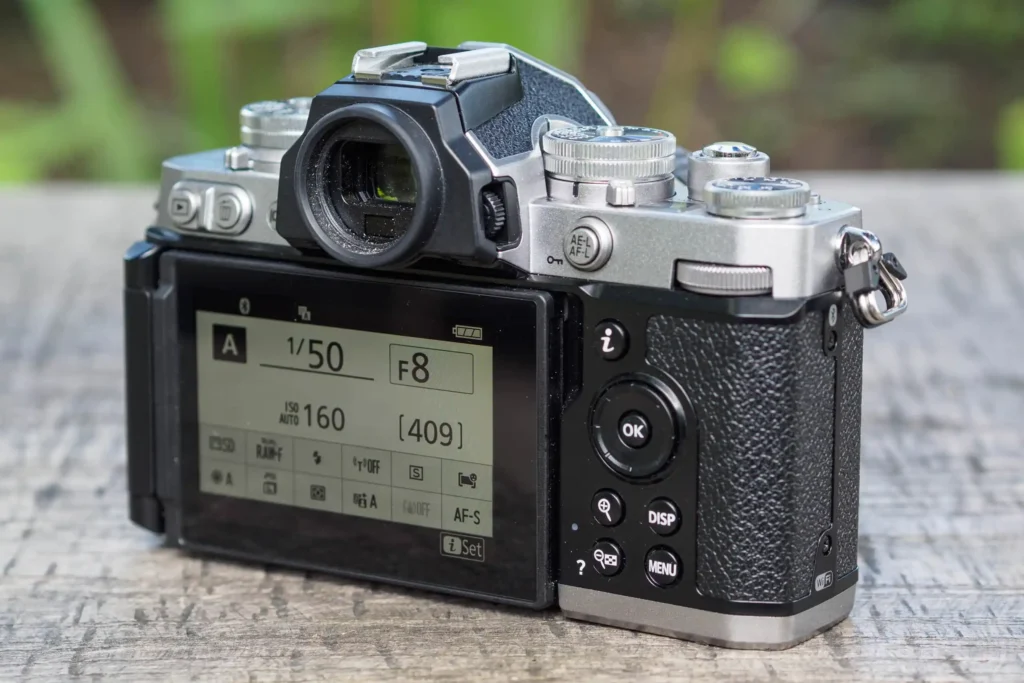
The Nikon Zfc is a stylish mirrorless camera that combines retro design with modern features. It boasts a 20.9MP APS-C sensor, 4K video recording, and a fully articulating flip screen that’s perfect for self-portraits and vlogging. The Zfc also features a range of creative filters and effects, as well as compatibility with Nikon’s extensive lineup of Z-mount lenses.
Using Cameras with Flip Screens Effectively
Flipping the Screen for Different Shooting Angles
One of the key advantages of cameras with flip screens is the ability to capture shots from various angles and perspectives. By flipping the screen out and rotating it, you can easily frame shots from high or low angles without having to contort your body or strain your neck. This is particularly useful when shooting in tight spaces or crowded environments, where maneuverability may be limited.
When shooting from a high angle, flip the screen downwards so that you can easily see the composition without having to raise the camera above your head. This technique is perfect for capturing crowd shots or photographing subjects from a bird’s-eye view. Conversely, when shooting from a low angle, flip the screen upwards to frame your shot without having to crouch or lie on the ground.
Utilizing Touchscreen Controls
Many cameras with flip screens also feature touchscreen functionality, which can greatly enhance your shooting experience. By navigating menus and adjusting settings with a simple tap of the screen, you can quickly and easily customize your camera’s performance to suit your needs.
Touchscreens also offer a range of advanced focusing options, such as touch-to-focus and touch-tracking. With touch-to-focus, you can select your desired focus point by simply tapping on the screen, ensuring that your subject is always sharp and in focus.
Customizing Settings for Convenience
Cameras with flip screens often allow you to customize the display settings to suit your preferences and shooting style. For example, you may be able to adjust the screen’s brightness, contrast, and color balance to enhance visibility in different lighting conditions. Some cameras also offer the option to display a grid overlay, which can help you compose shots using the rule of thirds or other compositional techniques.
Additionally, many cameras enable you to customize the information displayed on the screen, such as the histogram, level gauge, and exposure settings. By configuring the display to show only the most essential information, you can streamline your shooting process and avoid cluttering the screen with unnecessary data.
Best Practices for Maintaining Cameras with Flip Screens
Cleaning and Protecting the Screen
To ensure the longevity and optimal performance of your flip-screen camera, it’s crucial to properly clean and protect the screen. Avoid touching the screen with dirty or oily fingers, as this can leave smudges and fingerprints that can be difficult to remove. When cleaning the screen, use a soft, lint-free cloth and gently wipe the surface in a circular motion. For stubborn smudges, you can slightly dampen the cloth with a small amount of distilled water or a specialized screen cleaning solution.
To protect the screen from scratches and impacts, consider investing in a screen protector specifically designed for your camera model. These thin, transparent sheets adhere directly to the screen and provide an extra layer of protection against everyday wear and tear.
Avoiding Damages to the Flip Mechanism
The flip mechanism is one of the most delicate components of a camera with a flip screen. To prevent damage, always handle the screen with care and avoid applying excessive force when rotating or adjusting it. When not in use, it’s best to keep the screen in its closed position to protect it from accidental impacts or debris.
Be mindful of the screen’s position when storing or transporting your camera. Avoid placing heavy objects on top of the camera or storing it in a cramped bag where the screen may be subjected to pressure or abrasion. If possible, use a padded camera bag with a dedicated compartment for your camera to minimize the risk of damage during transport.
Comparing Cameras with Flip Screens to Traditional Cameras
Advantages of Flip Screen Cameras
Cameras with flip screens offer several distinct advantages over traditional cameras. One of the most significant benefits is the ability to capture shots from unique angles and perspectives that would be difficult or impossible to achieve with a fixed screen. This versatility is particularly valuable for photographers and videographers who frequently shoot in challenging environments or need to compose shots quickly and efficiently.
Flip screens also provide a clear view of the camera’s live preview, enabling you to accurately assess exposure, focus, and composition in real-time. This is especially useful when shooting in bright sunlight, where glare can make it difficult to see the screen on a traditional camera. Additionally, the ability to see yourself while recording video or taking self-portraits is a game-changer for vloggers and content creators who often work independently.
Limitations of Flip Screen Cameras
Despite their numerous benefits, cameras with flip screens do have some limitations compared to traditional cameras. One potential drawback is the added complexity and fragility of the flip mechanism, which may be more susceptible to damage if not handled carefully. This can be a concern for photographers who work in rugged or unpredictable environments where the camera may be subjected to impacts, moisture, or debris.
Another consideration is that flip screens can add bulk and weight to the camera body, which may be less appealing to photographers who prioritize portability and discretion. Some flip-screen cameras may also have slightly shorter battery life compared to their traditional counterparts, due to the additional power required to operate the screen.
Conclusion
Cameras with flip screens have revolutionized the way photographers and videographers approach their craft, offering unparalleled versatility, convenience, and creative control. Whether you’re a professional content creator, an amateur vlogger, or an enthusiastic hobbyist, a flip-screen camera can help you take your photography and videography to the next level.
By understanding the benefits and limitations of these innovative devices, as well as the key factors to consider when making a purchase, you can select the perfect flip-screen camera to suit your needs and preferences. With the right techniques and best practices for using and maintaining your camera, you’ll be well-equipped to capture stunning images and videos from any angle, in any environment.
As technology continues to evolve, it’s exciting to imagine the new possibilities and advancements that will emerge in the world of flip-screen cameras. From improved screen resolution and touchscreen functionality to enhanced durability and low-light performance, the future of photography and videography looks brighter than ever before.

